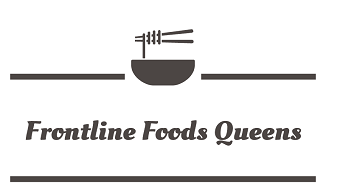Grey vs red corned beef – the debate that never ends! Who wouldn’t love a delicious serving of corned beef, especially during the lively St. Patrick’s Day celebrations in the northeast United States? If you’re new to this yummy treat, you might be wondering what the fuss is all about with the difference between grey and red corned beef. Well, buckle up, because we’re diving deep into the topic of grey vs red corned beef and what exactly corned beef is all about.
What Is Corned Beef?
Corned beef, also known as salt beef, is a type of brisket that’s been cured in a salty brine with various spices like coriander, peppercorn, mustard seeds, bay leaves and more. The pink color that we associate with corned beef comes from the use of nitrates, which help prevent the growth of harmful bacteria, making it safe to eat. The end result is a mix of sweet, salty, and tangy flavors that are perfect in a sandwich or as a main dish with roasted vegetables.
What’s The Difference : Grey Vs Red Corned Beef
Now, when it comes to corned beef, you may have noticed that it comes in two types – gray and red. The main difference between the two is the type of salt used during the curing process. Gray corned beef is primarily found in New England and is known as Boston Irish corned beef, while red corned beef is more commonly found in the rest of the world and is referred to as New York style corned beef.
The difference in taste between the two is notable – gray corned beef is said to be softer and sweeter with a less salty taste, while red corned beef is cured using nitrate (in the form of sodium nitrate), which preserves its red color and is generally more salty.
Mistakes To Avoid When Make Corned Beef
Whether you’re a seasoned cook or trying it for the first time, it’s important to avoid common mistakes that can turn your delicious dish into a tough, chewy mess.
Not enough water in the large pot
This is a classic mistake when simmering corned beef on the stovetop. You want to make sure the beef is completely covered in liquid to ensure a tender result. Make sure to check the water level throughout the cooking process and add more as needed.
Not rinsing the meat
Before cooking, it’s important to rinse the meat several times under cool water. This will remove any excess salt from the meat, which can make your dish too salty. Don’t worry, rinsing the meat won’t remove the flavor.
Not cooking the meat long enough
Corned beef is made from brisket, a naturally tough cut of meat, so cooking it properly takes time. You need at least three hours of lengthy cook time on the stovetop or eight to ten hours in a slow cooker to transform the meat into a fork tender, mouth-watering masterpiece.
Cooking at high heat
High heat is the enemy of corned beef brisket. Cook it on low instead to get that soft and tender texture you’re looking for. Whether you’re using the stovetop, pressure cooker or slow cooker, low heat is key.
Cutting the meat incorrectly
When you slice your cooked corned beef, make sure to cut against the grain. This shortens the muscle fibers and makes each bite easier to chew. It’s like slicing steak – look for the lines of visible muscle fibers and cut through them.
By avoiding these common mistakes, you’ll be well on your way to cooking the perfect corned beef every time.
What’s the Secret to Cooking up a Delicious Grey Corned Beef?
First, give that brisket a good rinse under cold water to get rid of any residual brine. Then, go ahead and toss that brine – you won’t need it anymore. Give the brisket a good sprinkle of sea salt, then pop it into a Crock Pot slow cooker with enough water to cover it by a few inches. Finally, add in some yummy veggies like celery root, red potatoes, rutabagas, carrots, parsnips, and onions. Cook it all up on high for 2 hours and voila! Perfectly cooked grey corned beef, ready to be devoured.
What Cut Of Corned Beef Is Known For Having The Strongest Flavor?
You may have wondered about the best cut of beef to use for corned beef. Well, let me tell you, the key to making corned beef with the most flavor is using brisket, specifically the flat cut.
Now, I know you may be thinking, what if I can’t find brisket or want to make my own brine? Don’t worry, any round beef cut from the steer’s hindquarters will do in a pinch. Although it won’t have the exact same flavor as brisket, it will still be delicious.
But, why go with brisket in the first place? Well, it all has to do with tradition. The Irish were masters at turning a tough and cheap cut of meat into something mouth-watering, and that’s exactly what they did with brisket. Not only is it a tasty and meaty cut, but it has a unique flavor that’s become a favorite of grillers and corned beef lovers everywhere.
So, next time you’re making corned beef, consider reaching for a brisket, the cut with the most flavor. Your taste buds will thank you!
Why Is Brisket Best For Corned Beef?
The brisket is a cut of meat that has been a staple in kitchens for generations. This classic piece of beef comes from the lower breast portion of a steer and is a hefty cut of meat, weighing anywhere from 10 to 20 pounds.
As the brisket is used often in the steer’s life, it’s packed with collagen and strong muscle fibers. And when cooked right, the brisket has a rich, meaty flavor that can’t be beat. Whether slow cooked or grilled, the fat from the brisket will melt away and add a tantalizing depth to the meat.
The brisket primal is divided into two sections, the flat and the point, each with its own unique characteristics. The flat is more uniform in thickness, and is relatively lean. On the other hand, the point, thicker end of the brisket, often has more fat, particularly when there’s intermuscular fat or marbling. And when it comes to corned beef, the flat cut is the clear winner. It’s no wonder why the Irish embraced this tough cut of meat and turned it into the delicious dish we all know and love today.
What’s The Difference Between The Flat And Point Cut Of Brisket?
When it comes to corned beef, you might have heard about the brisket cut and its different variations – flat and point. But what exactly sets them apart?
Well, when butchers break down the brisket into its separate cuts, they get the flat and point pieces. You can choose to buy the entire brisket, which has both cuts, or just the flat or point cut on its own.
And if you’re ever unsure of which one you’re getting, just ask your local butcher. They’ll be happy to clarify for you. When you see a corned beef labeled simply as “brisket,” it’s probably the full primal cut, which includes both the flat and point.
Frequently Asked Questions About Grey Vs Red Corned Beef
Which is better, red or grey corned beef?
Well, it’s widely considered that gray corned beef has a better taste. People say it’s softer, sweeter and less salty than red corned beef. And, of course, one of the most popular ways to enjoy corned beef is by making corned beef and cabbage.
Is gray corned beef any good?
Gray corned beef is soaked in a saltwater brine for a couple of weeks. This type of brine is free from any preservatives, which makes it a great option for those who are looking to avoid nitrates and nitrites. Plus, since the brine isn’t seasoned, you can add your own favorite seasonings to the gray corned beef.
What’s the tastiest cut of corned beef?
When it comes to corned beef, the flat cut is the preferred option. But, the whole brisket is used often as well. So, if you want to make the perfect-looking corned beef meal, go for the flat cut.
What is gray corned beef referred to as?
Beef that’s cured without nitrates or nitrites takes on a gray color and is sometimes called “New England corned beef.”
Why did my corned beef turn out tough and chewy?
If you cooked it on high heat for too long, it’s likely that the corned beef will turn out tough and chewy. The best way to cook corned beef, regardless of the cooking method, is over low heat.
What’s the healthiest cut of corned beef?
The flat cut of the brisket is leaner and more uniform in shape and size, making for a corned beef dinner that’s not overly fatty. Plus, the flat cut will slice up nice and even for serving. On the other hand, the point cut of the brisket may be more tender, but it’s 50% fat, which means there’s less meat for serving.
Should corned beef be red?
As long as the internal temperature of the corned beef reaches 145 degrees F with a three-minute rest time, it’s safe to eat the red brisket. And, even after cooking, corned beef may still be pink in color, but this doesn’t mean it’s not fully cooked. Nitrite is used in the curing process, which contributes to the color difference.
What color does beef turn when it’s gone bad?
Raw ground beef should be a bright red on the outside and brownish on the inside. If the surface has turned a thoroughly brown or gray color or has grown mold, it’s a sign that it’s gone bad and should be thrown out.
What’s the best meat for making corned beef?
Corned beef is traditionally made from beef brisket, which is a large piece from the breast or lower chest of beef cattle. Brisket is a tough cut with connective tissue throughout, and a whole brisket can weigh 10 pounds or more. When it’s cooked whole, it’s usually served as a roast or barbecued brisket.
Is corned beef Irish or American?
Although many of the so-called “Irish traditions” are more American than Irish, including eating corned beef, corned beef does actually have Irish roots.


